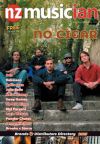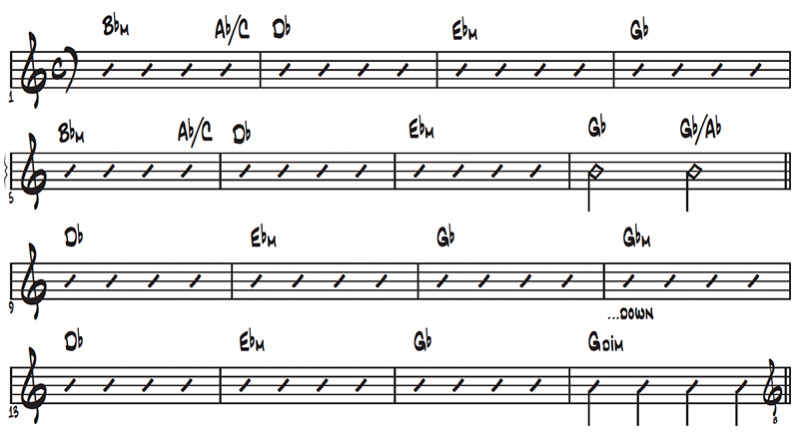X-Factory: Rosé – On The Ground
X-Factory: Rosé – On The Ground
Rosé, hyperreality, harmony and the pop-drop. The term hyperreality was coined by French theorist Jean Baudrillard to describe the postmodern, semiotic condition of society in which we are unable to distinguish between reality, and our simulation of reality (Medium, 2020).
When I stop to think about examples of hyperreality in music, my first thoughts often return to Royals, by Lorde. In a 2014 feature Vice reminded readers that a sense of irony can be evoked by considering an artist who both criticises the excesses and materialism of current pop, as well as contributing to the materialism that she sets out to criticise, perhaps by sound-tracking an advert for Samsung and collaborating with MAC cosmetics. This shows us that capitalism can be used to commodify anti-capitalist virtues.
This article isn’t about Lorde or hyperreality, however, although we will come back to that. Rather it is about an NZ-born singer called Rosé, and how she is taking the world by storm, first as a band member of Blackpink and now as a solo artist. Blackpink is a South Korean girl group that have collaborated with Dua Lipa, and are set to overtake Justin Bieber’s subscriber count. They are a big deal internationally right now.
Born Roseanne Park in 1997, but much better known by the mononym Rosé, is a Korean-Kiwi singer, born here and raised in Australia. Rosé signed with the now-famous South Korean label YG Entertainment following an audition in 2012, training there for four years. Her debut single is called On The Ground, and in part, I suppose its meaning can be interpreted as autobiographical in relation to her training for Blackpink, as she reflected in a 2021 article with Rolling Stone:
“From when I was a trainee I lived day to day, running towards my dreams,” she explained in a press conference. “Once in a while, there are moments where I’d question my motives, and I think the lyrics express this really well.”
This message is evident in the chorus: “I worked my whole life/Just to get high, just to realise/Everything I need is on the ground.”
She stresses the importance of taking care of what actually matters to you most, especially when on a roll. On The Ground soared in at No. 1 on both the Billboard Global 200 and Billboard Global Excl. U.S. charts and this X-Factory is here to find out why.
First, On The Ground is pop, unashamed, and undiluted pop. Charlie Harding, co-host of Switched On Pop (a podcast that breaks down how popular music works), reminds us of the importance of the pop-drop, a post-chorus musical interlude that blends techniques from electronic dance music to hip hop, that has taken the place of the chorus in pop music.
The pop-drop is the new climax of a song, right where we would expect to hear the chorus. In the case of On The Ground, it occurs for the first time at 55s, just after what might be considered the chorus section. The form is verse — pre-chorus — chorus — pop-drop — verse 2 — pre-chorus — chorus —pop-drop —bridge — re-harmonised pop-drop.
The half time feel of the chorus section adds contrast and intensity to the pop-drop that follows it at bar 17, which is a heavily synthesised, syncopated bass figure using Db Mixolydian mode, as shown in Figure 1.
It is not an accident that this low synth line appears over the lyrics ‘on the ground’, prosody in action folks. More prosody occurs in terms of harmonic movement too, but first, let’s look at some of that harmony.
Figure 2 shows the chords for the verse, pre-chorus, and chorus. It starts in the key of Bb minor during the verse and pre, modulating to the relative major Db, for the chorus (bar 9), a modulation that creates a sense of uplift.
A Brahms-like IV-IVm progression is played over bars 11-12 that occurs over the lyrics ‘look at me I’m never coming down’, prosody is evident as the Gb major chord moves to a Gb minor. It is interesting to note the use of suspended harmony too (Gb/Ab) at bar 8. Suspended chords don’t often occur in modern pop music, and perhaps even more rare is the use of a non-functional G diminished chord at bar 16, the diminished sound is usually only reserved for a dominant substitution which this is not; very interesting and unusual from a pop perspective.
Even more harmonic prosody is evident during the outro (as shown in Figure 3), as the pop-drop is accompanied by a descending bass figure supporting an I | I7/bVII | IV/VI | bVII | V | I chord progression, a daring move introducing more harmonic material on the outro, it reminds me of Radiohead’s terminally climatic form (Osborne, 2017), where a new and perpetual section of music is introduced at the end.
To conclude, On The Ground is refreshingly harmonic for a pop song (which I see as a real positive move), the production is of international standing, and all aspects of the craft of songwriting have been attended to.
So what about the hyperreality aspect then I hear you ask? Well yes, I know that the video of On The Ground starts with a missile colliding with a parked limousine, presumably implying the need for the protagonist to lead a more simple life, and Roseanne’s lyrics pertain to focusing on ‘the important things’, however it is difficult to not view On The Ground in terms of hyperreality. I mean this debut track will certainly put Rosé as a solo artist in the limelight, and ironically perhaps may launch a second career for the singer. I hope that she listens to her own message.
Dr Mark Baynes is Programme Manager for the Bachelor of Musical Arts degree at MAINZ, Auckland; a degree program that fosters students’ ability to find their own musical voice, culminating with the creation of a capstone project such as an album, film score or music for game audio. For more information visit mainz.ac.nz
References
- Billboard. (2016). How the Pop-Drop Became the Sound of 2016.
- Medium. (2020). Introducing Jean Baudrillard’s concept of hyperreality.
- Osborn, B. (2017). Music Theory and Radiohead, an Annotated Interview with Prof. Brad Osborn!.
- Rolling Stone. (2021). Rosé Steps Out of Blackpink for a Sparkling Solo Debut.
- Vice. (2014). Lorde and the Hyperreal Nature of Pop Culture.




